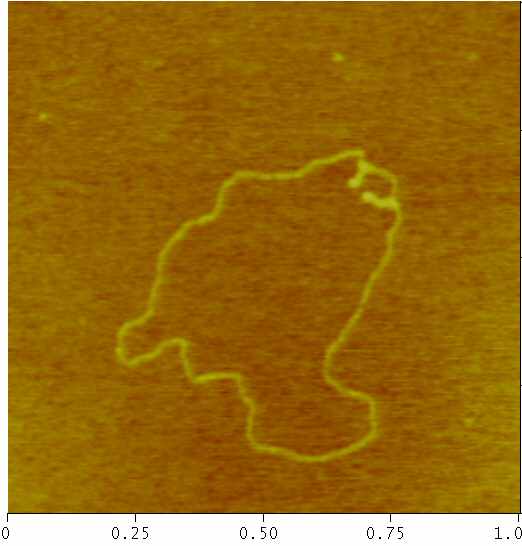Beyond the Double Helix with Atomic Force Microscopy
Analysis of DNA is important in medicine and biology. New drugs, new treatments, and new understanding of life come from better knowledge of DNA function. This in turn depends on the characteristics of the higher-order structures formed by DNA double helices. Whereas chemical and enzymatic probes yield only the average behavior of an ensemble of DNA molecules, direct observation of individual molecules provides specificity that sharpens insight.
DNA usually has a rod-like conformation that makes it ideal for AFM studies of molecular weight and conformation. Molecular weight is proportional to the contour length of the molecule. The presence of supercoiling in the circular DNA plasmid molecule shown below is evident from the presence of short branch-like features near the upper right corner. The branches are brighter in the height image than other parts of the molecule, which means they are thicker. Such regions are interpreted as coiling of the double helix. The coiling relieves stress and is analogous to the spontaneous coiling of a telephone handset cord.
Sample preparation is fairly straightforward, consisting of preparing dilute solutions of DNA in buffer, applying a drop to a mica surface, rinsing and drying. We usually image using Tapping Mode in air, but liquid tapping is also possible.



